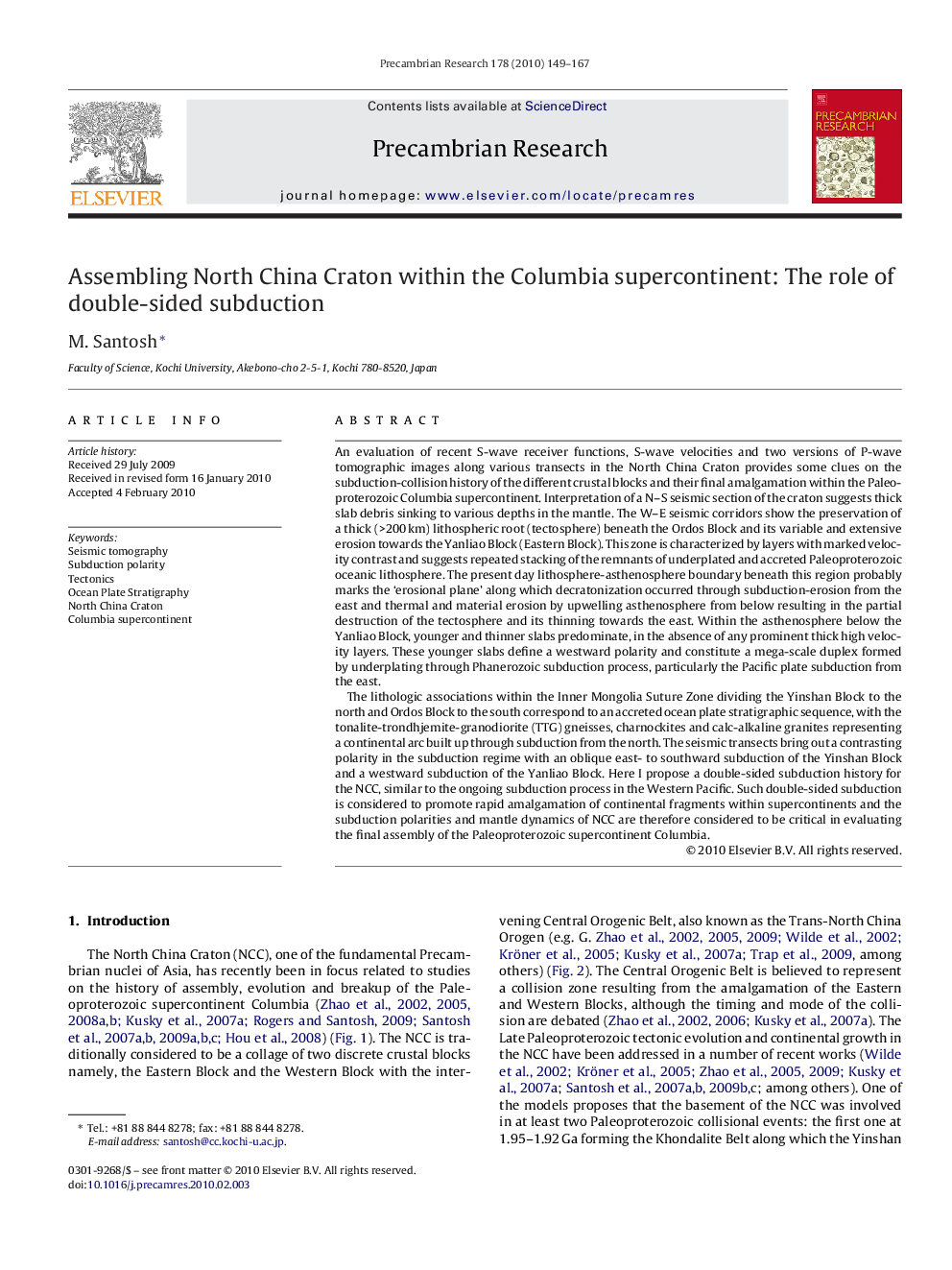| Article ID | Journal | Published Year | Pages | File Type |
|---|---|---|---|---|
| 4723871 | Precambrian Research | 2010 | 19 Pages |
An evaluation of recent S-wave receiver functions, S-wave velocities and two versions of P-wave tomographic images along various transects in the North China Craton provides some clues on the subduction-collision history of the different crustal blocks and their final amalgamation within the Paleoproterozoic Columbia supercontinent. Interpretation of a N–S seismic section of the craton suggests thick slab debris sinking to various depths in the mantle. The W–E seismic corridors show the preservation of a thick (>200 km) lithospheric root (tectosphere) beneath the Ordos Block and its variable and extensive erosion towards the Yanliao Block (Eastern Block). This zone is characterized by layers with marked velocity contrast and suggests repeated stacking of the remnants of underplated and accreted Paleoproterozoic oceanic lithosphere. The present day lithosphere-asthenosphere boundary beneath this region probably marks the ‘erosional plane’ along which decratonization occurred through subduction-erosion from the east and thermal and material erosion by upwelling asthenosphere from below resulting in the partial destruction of the tectosphere and its thinning towards the east. Within the asthenosphere below the Yanliao Block, younger and thinner slabs predominate, in the absence of any prominent thick high velocity layers. These younger slabs define a westward polarity and constitute a mega-scale duplex formed by underplating through Phanerozoic subduction process, particularly the Pacific plate subduction from the east.The lithologic associations within the Inner Mongolia Suture Zone dividing the Yinshan Block to the north and Ordos Block to the south correspond to an accreted ocean plate stratigraphic sequence, with the tonalite-trondhjemite-granodiorite (TTG) gneisses, charnockites and calc-alkaline granites representing a continental arc built up through subduction from the north. The seismic transects bring out a contrasting polarity in the subduction regime with an oblique east- to southward subduction of the Yinshan Block and a westward subduction of the Yanliao Block. Here I propose a double-sided subduction history for the NCC, similar to the ongoing subduction process in the Western Pacific. Such double-sided subduction is considered to promote rapid amalgamation of continental fragments within supercontinents and the subduction polarities and mantle dynamics of NCC are therefore considered to be critical in evaluating the final assembly of the Paleoproterozoic supercontinent Columbia.
